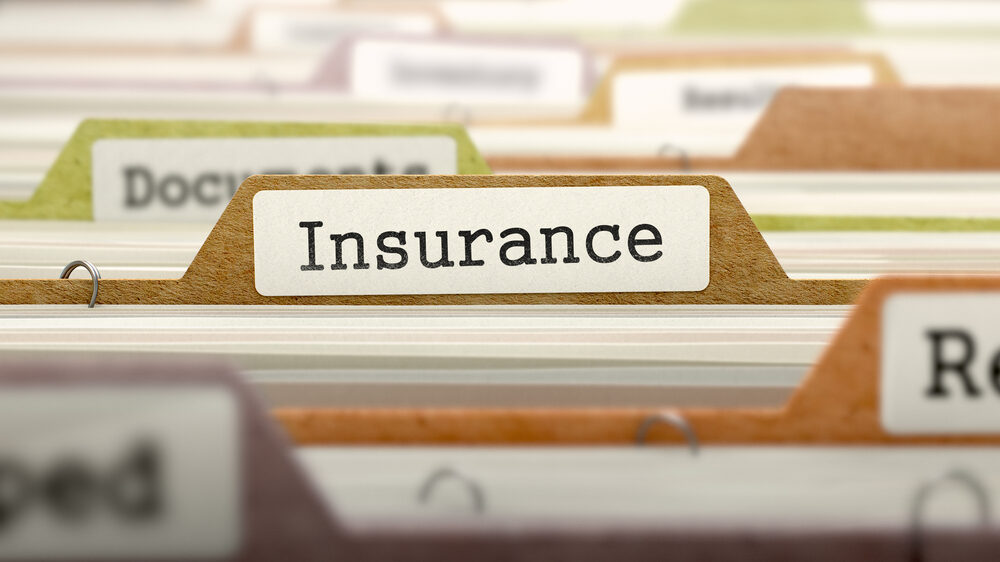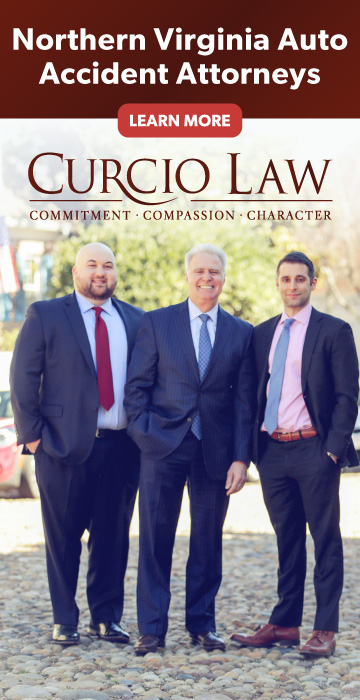
There are countless ways someone can act negligently in everyday life. Unfortunately, those negligent actions can lead to innocent people being injured during everyday situations, like driving to work, going shopping, or even visiting a friend at their home. Bodily injuries can have lasting effects on your life that exceed just the physical aspect. Physical injuries can lead to negative impacts on your financial well-being, emotional health, relationships, and job.
If you suffer a personal injury in Virginia, the negligent party will be responsible for your injuries and the impact those injuries have had on your life. Unfortunately, there is no magic wand that we can wave to heal your injuries, so the civil justice system is set up to award compensation to make the injured whole again. Since most negligent parties do not have sums of money that they can pay the injured party, the injured party will usually receive compensation for their injuries through an insurance company.
As such, it is important to maximize the insurance coverage available to the injured. The maximum amount of insurance coverage available acts as the ceiling of compensation an injured party may receive for their injuries. Unfortunately, like any business, insurance companies try to minimize claims and pay as little as possible to protect their bottom line.
Understanding the types of insurance policies a business or individual may have and any additional coverage is an important part of receiving full and fair compensation for your injuries. An experienced personal injury attorney who knows the ins and outs of insurance policies can help. At Curcio Law, our lawyers are highly skilled at building strong insurance claims and leveraging various types of coverage. If you’ve been hurt, we can gather evidence, determine the value of your claim, communicate and negotiate with insurance companies on your behalf, and, ultimately, ensure you’re properly compensated.
But first, let’s review the role of different types of insurance policies in personal injury claims, followed by how to maximize insurance coverage after an injury.
Personal Injuries and Types of Insurance Policies
There are two types of insurance coverage that will afford coverage to you if you are injured due to someone else’s negligent behavior. The first type of coverage is third-party or liability insurance. This type of insurance covers the person or entity that was at fault for your injuries. The second type of insurance coverage is first-party coverage. This type of insurance covers yourself.
Liability Coverage
Liability coverage will have to be paid first in personal injury claims. When looking for insurance coverage, you should start by looking for the insurance that covers the liable party. In a motor vehicle accident, this means that you start by looking for an insurance policy that covers the vehicle the at-fault driver was using at the time of the crash.
In a routine crash, usually, the at-fault driver is driving their own vehicle. There will normally be a personal auto policy that covers both the vehicle and the driver. The personal auto policy will afford coverage to the named insureds, permissive users, and resident relatives. The owner or primary driver will usually be a “named insured,” which means they are the person listed on the declarations page of the insurance policy.
Sometimes, the at-fault driver will not be driving their own vehicle. If they are driving a vehicle with the permission of the named insured, then they are considered a permissive user. A permissive user will be covered under the auto policy that covers the involved vehicle. A permissive user can be a friend, coworker, colleague, etc.
A resident relative will also be covered under a personal auto policy. A resident relative is someone who is related to the named insured by blood or marriage and lives within the same household as the named insured. In determining if an individual is a resident relative, the intent of the relative matters. There has to be an intent for the relative to remain a permanent resident of the household. This means that a relative staying at the named insured’s house during a vacation or for a couple of weeks would not be considered a resident relative.
Other Types of Third-Party Coverage
Having an experienced personal injury attorney investigate the collision is important because there are several other sources of insurance coverage that are not immediately apparent. The first component of an investigation is to figure out where the at-fault driver was driving at the time of the crash and why the driver was driving on that path.
If the at-fault driver was driving as part of their employment, the employer would be liable for the crash as well. This means that the insurance policy that insures the employer will have to compensate the injured for their injuries. These commercial policies typically have much higher policy limits than a personal auto policy.
If the at-fault driver was driving for a rideshare, like Lyft or Uber, there would be mandated insurance that the rideshare company must provide. The amount of that insurance policy will depend on what the driver was doing at the time of the crash. There would be different policy limits if the rideshare driver had a passenger in their vehicle versus the driver only having the rideshare application on.
There will also be additional coverage if the at-fault driver is driving for a company that delivers property. This includes package deliveries from online shopping. This also includes food delivery and grocery delivery apps such as DoorDash, Grubhub, Uber Eats, and InstaCart.
If the at-fault driver was driving a truck or tractor-trailer, there may be multiple insurance policies that are available. First, there may be different policies that cover the tractor and the trailer. There are also multiple parties that may be liable for your injuries, in addition to the truck driver. This can include the truck owner, the broker, the shipper, or potentially the manufacturer if there is a defect with the truck. Trucking companies normally hold several policies or have an insurance tower that would be available if you were injured by a truck.
Umbrella Insurance
Individuals who have substantial assets sometimes purchase umbrella coverage to protect themselves. Umbrella policies are excess policies that provide coverage on top of an underlying policy. Businesses also can purchase umbrella policies as an additional source of protection. In an auto accident, the umbrella policy would kick in if the injured party’s damages are worth more than the limits of the personal auto policy.
In general, umbrella insurance policy limits are at least $1,000,000, which protects the at-fault party while ensuring the injured party has access to coverage for more serious and catastrophic injuries. If the person liable doesn’t have umbrella insurance, their assets would be at risk, and sometimes, they don’t have the assets needed to pay the full damages of a personal injury.
For example, say an at-fault driver rear ends your vehicle, and you suffer a traumatic brain injury (TBI). The medical costs alone could exceed the at-fault driver’s personal auto insurance policy, yet TBIs could mean a lifetime of treatments and care, prevent the injured from working, and cause other hardships and losses. Let’s say the at-fault driver had $250,000 in insurance on their personal auto policy, but the injured party’s damages were worth $500,000. In this scenario, the only path to a full and fair recovery for the injured party would be through collecting from an umbrella policy.
Like its name, umbrella policies are not limited to auto crashes. Umbrella policies protect their insured from any liability. Due to the high amount of coverage that umbrella policies provide, the insurance carriers normally require that the underlying coverage is substantial ($250,000+) before issuing an umbrella policy.
First-Party Insurance
Since you can’t control who injures you, the best way to maximize insurance coverage is through your own insurance policy. Every auto policy in Virginia will have uninsured or underinsured motorist coverage. This coverage comes into play when the at-fault party does not have enough insurance to fully and fairly compensate you for your injuries.
Discovering all underinsured motorist policies (UIM) is essential to maximizing your potential recovery. The injured party has multiple avenues to discover UIM policies that are available to them.
The first source of UIM coverage is any policy that covers the vehicle that was occupied by the injured person at the time of the crash. For example, if the injured was a passenger in their friend’s vehicle, the policy covering the friend’s vehicle would provide the first layer of UIM coverage. This can also include commercial policies when the injured person was driving as part of their employment.
The second source of UIM coverage is any policy under which the injured party is a named insured. This is normally a personal auto policy that covers the injured’s primary car. However, in some situations, this could include a commercial policy. The injured may be a named insured on a commercial policy if they are a sole proprietor of a business or a high-up executive in a company.
The third source of UIM coverage is any policy that covers a motor vehicle not involved in the crash under which the injured person is not a named insured. This normally is a policy that covers a resident relative of the injured.
It is important to note that umbrella policies may also be a source of UIM coverage. Most insurance carriers will refuse to provide UIM coverage on the umbrella policy, but it is important to shop around to find a carrier that will. An umbrella protects you from being personally liable if you cause an injury, but it is also important to have an umbrella protect you if you are injured by a party that does not have enough insurance coverage.
Medpay
Medical payments coverage, or medpay, is another form of first-party coverage that can help an injured maximize their recovery. This is no-fault coverage, which means that you can collect from this coverage even if you are at fault. Medpay normally has a relatively small limit of coverage (i.e., $2,000 – $10,000) and will pay for any medical expenses that are suffered as a result of a car crash. If you are injured, you should always have the medical provider bill your health insurance first. Medpay will reimburse the insured for any amount the health insurance company paid plus any amount the insured paid out of pocket (i.e., for deductibles or copays). While this is normally a small amount of coverage, it does stack for every vehicle that is on the policy. So, if you have a personal auto policy that covers your three household vehicles, the medpay on all vehicles would stack on top of each other. This means that if you have $10,000 in medpay limits, you would have $30,000 in total medpay available to you ($10,000 limit x 3 vehicles). This is different than UIM coverage, which does not stack within the same insurance policy.
Conclusion
As you can see, there are multiple avenues to maximize the insurance coverage available to you. At the end of the day, the total amount of insurance coverage will play a major part in determining the maximum you can recover in your personal injury case. At Curcio Law, our team is highly experienced with personal injury cases involving insurance claims. We know how to maximize insurance coverage after an injury, which is essential in cases involving catastrophic or fatal injuries. With our team of personal injury lawyers on your side, we can walk you through each part of your claim, help you gather evidence, negotiate with insurers, and protect your rights.
Contact us online or text or call 703-836-3366 for a free consultation.

Rakin Hamad joined Curcio Law as an associate in August 2018 after graduating from George Mason Law School. During law school, Rakin demonstrated his dedication to client advocacy and was a member of the trial advocacy association, the pro bono society, and the George Mason Law Review. His approach to the law mirrors the firm’s philosophy of treating each client with commitment, compassion and character. Contact Rakin at rhamad@curciolaw.com.
















Comments for this article are closed.